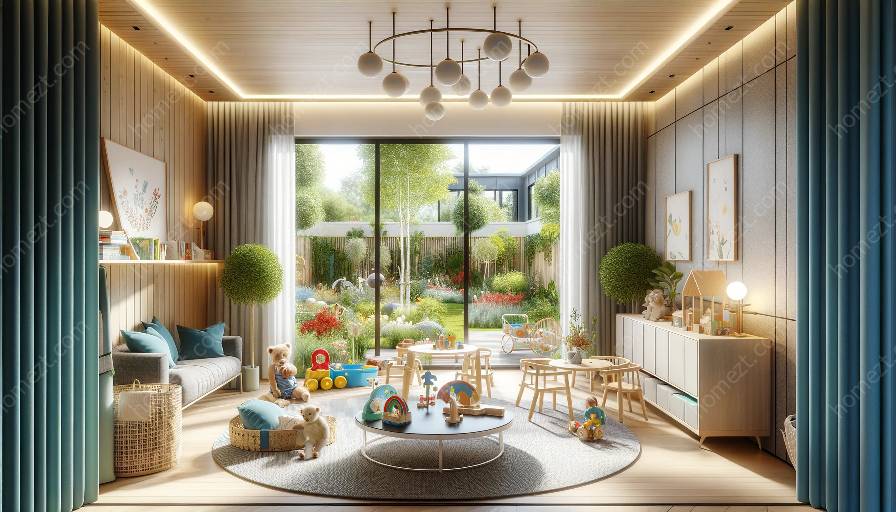Imaginative play is a crucial aspect of childhood development, fostering creativity, social skills, and problem-solving abilities. Creating imaginative play spaces in nursery and playroom settings requires careful consideration of design and layout to ensure a safe, engaging, and functional environment for children to explore and learn.
Understanding Imaginative Play Spaces
Imaginative play spaces are designed to encourage children to engage in open-ended, creative play. These spaces provide children with the freedom to explore their imagination, interact with others, and develop essential skills through play.
When designing imaginative play spaces for a nursery or playroom, it's essential to consider a variety of factors, including safety, accessibility, and the promotion of imaginative and creative play activities.
There are various elements to consider when creating imaginative play spaces, such as the selection of age-appropriate toys, furniture, and décor that stimulate creativity and foster exploration. Additionally, the layout and organization of the space play a crucial role in creating an environment that encourages imaginative play and social interaction among children.
Design and Layout Considerations
The design and layout of imaginative play spaces should prioritize safety, functionality, and aesthetic appeal. Consider the following aspects when designing and organizing these spaces:
- Age-Appropriate Design: Tailor the design and layout of the play space to the specific age group of children who will be using it. Younger children may require softer surfaces and closer supervision, while older children may benefit from more complex play structures and interactive features.
- Natural and Stimulating Elements: Incorporating natural materials, such as wood, fabrics, and plants, can help create a warm and inviting atmosphere that inspires creativity. Integrate stimulating elements like colorful murals, interactive wall panels, and themed play areas to spark children's imagination.
- Flexibility and Versatility: Design the play space with flexibility in mind, allowing for easy reconfiguration of furniture and play equipment to accommodate different activities and group sizes.
- Accessibility and Safety: Ensure that the play space is easily accessible for children of all abilities and that safety measures, such as rounded edges, secure fittings, and soft landing surfaces, are prioritized.
- Multi-Sensory Experiences: Create opportunities for children to engage their senses through a variety of textures, sounds, and visual stimuli. Incorporating sensory play elements, such as sand tables, musical instruments, and tactile surfaces, can enhance the overall play experience.
Building Engaging Play Environments
When designing imaginative play spaces for a nursery or playroom, the goal is to create an environment that captivates children's attention and encourages active participation. Consider the following tips for building engaging play environments:
- Themed Play Areas: Designating specific play areas with different themes, such as a pretend kitchen, construction zone, or nature corner, can inspire imaginative play scenarios and encourage role-playing.
- Zoning and Organization: Divide the play space into zones or sections that cater to different types of play activities, such as quiet reading nooks, active play areas, and creative arts and crafts stations.
- Creative Storage Solutions: Utilize storage solutions that are not only functional but also visually appealing. Colorful bins, labeled shelves, and accessible storage units can help maintain a tidy and organized play environment.
- Interactive Learning Displays: Incorporate interactive displays, such as chalkboards, magnetic walls, and display boards, to promote learning through play and encourage children to express themselves creatively.
- User-Centric Design: Involve children in the design process by considering their preferences, interests, and feedback. Creating a user-centric play space can lead to higher engagement and satisfaction among the children who use it.
Conclusion
Imaginative play spaces in nursery and playroom settings play a crucial role in fostering children's creativity, social skills, and cognitive development. By carefully considering the design and layout of these spaces, it's possible to create an environment that not only meets the functional needs of children but also captivates their imagination and encourages active play. Whether it's through themed play areas, versatile layouts, or engaging interactive displays, imaginative play spaces can provide children with the freedom to explore, learn, and create lasting memories through play.


